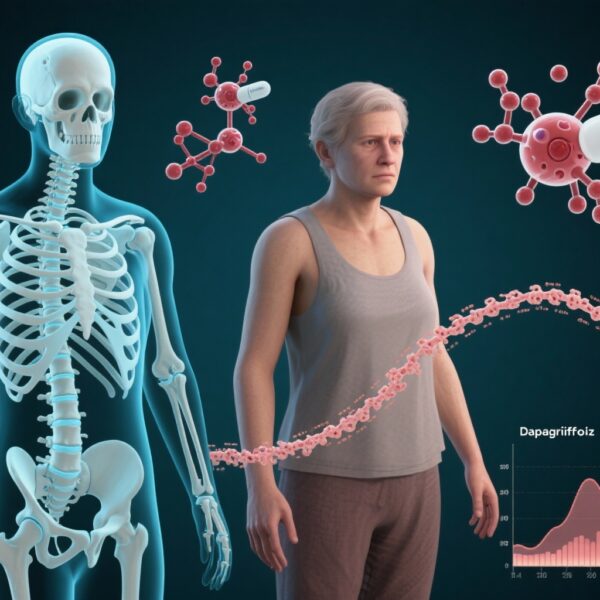Highlight
- Comprehensive genetic analysis across nearly one million individuals from six diverse ancestries validates the association between genetically predicted LDL cholesterol (LDL-C) and coronary artery disease (CAD) risk.
- LDL-C polygenic risk scores (PGS) constructed and validated within each ancestry demonstrate consistent predictive ability for LDL-C levels and CAD risk, supporting genetic proxies for LDL-C in diverse populations.
- The magnitude of CAD risk per 40 mg/dL genetically predicted LDL-C increase varies modestly across ancestries but remains directionally consistent and significant.
- This study addresses the underrepresentation of non-European populations in clinical trials of LDL-C lowering therapies, suggesting broad applicability of LDL-C lowering for CAD prevention worldwide.
Study Background
Coronary artery disease (CAD) remains a leading cause of morbidity and mortality globally. Elevated low-density lipoprotein cholesterol (LDL-C) levels are a major modifiable risk factor for CAD. Clinical trials of LDL-C lowering agents, including statins and newer therapies, have unequivocally demonstrated reductions in cardiovascular events. However, these trials disproportionately include individuals of European descent, limiting generalizability to other global populations with diverse ancestries. Genetic approaches using polygenic risk scores (PGS) leverage multiple genetic variants that influence LDL-C levels to predict CAD risk in individuals. Such studies offer a crucial opportunity to explore the trans-ancestry relevance of LDL-C as a CAD risk factor and the potential benefit of LDL-C lowering interventions in ancestrally diverse populations that are often poorly represented in clinical trials. The study by Urbut et al. (2025) in NEJM Evidence systematically evaluated the genetics of LDL-C and CAD risk across six global ancestry groups with nearly one million participants, filling important gaps in knowledge regarding CAD risk prediction and therapeutic generalizability.
Study Design
This large-scale genetic association study pooled data from six cohorts representing 967,325 individuals, including African (65,258), admixed American (45,393), East Asian (179,521), European (616,045), Middle Eastern (4,686), and South Asian (56,422) ancestry groups. Genetic ancestry determination combined principal component analysis and k-nearest neighbors classifiers to classify individuals into these ancestry groups.
Ancestry-specific LDL-C polygenic risk scores were developed using genome-wide association study (GWAS) summary statistics trained and externally validated within each group. These PGS provided a genetic proxy for LDL-C levels. The strength of association between the genetic LDL-C scores and measured LDL-C was tested within populations and scaled to represent the effect of a 40 mg/dL increase in LDL-C.
Finally, the study tested the association between the LDL-C PGS and clinical CAD risk using hierarchical Bayesian meta-analytic models to estimate the magnitude and consistency of effect sizes across ancestries.
Key Findings
- Validation of Genetic Proxy: The ancestry-specific LDL-C polygenic risk scores showed consistent and robust associations with measured LDL-C across all six ancestries, confirming the validity of these genetic proxies for LDL cholesterol levels.
- Association with CAD Risk: When scaled to a 40 mg/dL increase in genetically predicted LDL-C, all ancestry groups demonstrated a positive association with CAD risk. The posterior odds ratios ranged from 1.35 (95% credible interval [CrI], 1.05–1.68) among African ancestry individuals to 1.82 (95% CrI, 1.33–2.97) among Middle Eastern individuals.
- Heterogeneity Between Ancestries: Although directionally consistent, the effect sizes varied across populations. The Bayesian hierarchical model estimated that 97.9% of posterior samples had effect sizes greater than zero on the log scale, indicating strong evidence of association in all groups. The between-ancestry posterior variance (τ^2) was moderate at 0.062 (95% CrI, 0.001–0.352), reflecting some but not excessive heterogeneity.
- Implications for Clinical Trials Representation: The results address the concern that LDL-C lowering trial evidence extrapolated predominantly from European-ancestry populations may not apply to other ancestries. The genetic evidence suggests LDL-C is a universal determinant of CAD risk across ancestries, supporting the extension of LDL-C lowering therapies to diverse populations.
Expert Commentary
The study by Urbut et al. represents an important advance in our understanding of the genetic underpinnings of cholesterol metabolism and CAD risk across diverse populations. Their approach, leveraging large multi-ancestry cohorts and robust statistical methods, overcomes limitations of previous studies restricted to European populations. This work provides biological plausibility consistent with decades of LDL-C lowering trials yet importantly fills the evidence gap regarding underrepresented groups.
Some limitations merit consideration. The relatively small number of Middle Eastern participants adds uncertainty to effect estimates in that group. Additionally, the study used genetic proxies rather than longitudinal clinical trial data directly measuring LDL-C lowering outcomes, though Mendelian randomization principles support the causal interpretation.
Overall, these findings endorse current clinical guidelines promoting LDL-C lowering to mitigate CAD risk and highlight the need for more inclusive clinical trials to confirm differential responses or dosing considerations across ancestries.
Conclusion
This comprehensive genetic study unequivocally demonstrates that elevated LDL-C, as predicted by ancestry-specific polygenic risk scores, is associated with increased coronary artery disease risk across six major global ancestries. The consistency of this association underscores the universal role of LDL cholesterol as a cardiovascular risk factor and supports the broad applicability of LDL-C lowering therapies worldwide. The findings advocate for the inclusion of diverse populations in future clinical trials and reinforce LDL-C lowering as a foundational strategy for global cardiovascular disease prevention.
Funding and Registration
This research was funded by the National Institutes of Health and other sources. The study details and data sources are described in the original publication: Urbut SM et al. Genetics of Cholesterol and Coronary Disease Risk across Six Global Ancestries. NEJM Evid. 2025;4(11):EVIDoa2500105.
References
- Urbut SM, Chen Q, Sui Y, et al. Genetics of Cholesterol and Coronary Disease Risk across Six Global Ancestries. NEJM Evid. 2025;4(11):EVIDoa2500105. doi:10.1056/EVIDoa2500105
- Ference BA, Ginsberg HN, Graham I, et al. Low-density lipoproteins cause atherosclerotic cardiovascular disease. Evidence from genetic, epidemiologic, and clinical studies. A consensus statement from the European Atherosclerosis Society Consensus Panel. Eur Heart J. 2017;38(32):2459-2472. doi:10.1093/eurheartj/ehx144
- Khera AV, Chaffin M, Aragam KG, et al. Genome-wide polygenic scores for common diseases identify individuals with risk equivalent to monogenic mutations. Nat Genet. 2018;50(9):1219-1224. doi:10.1038/s41588-018-0183-z
- Arnett DK, Blumenthal RS, Albert MA, et al. 2019 ACC/AHA Guideline on the Primary Prevention of Cardiovascular Disease. Circulation. 2019;140(11):e596-e646. doi:10.1161/CIR.0000000000000678



